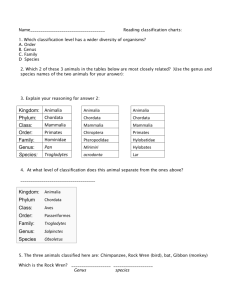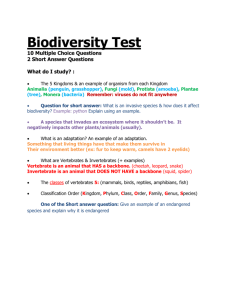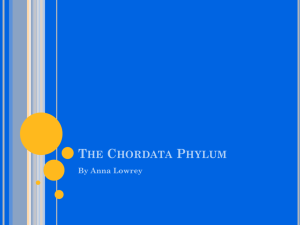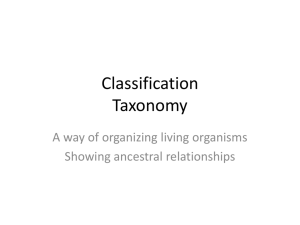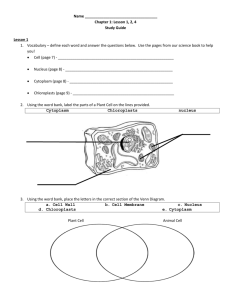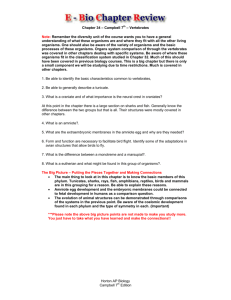Name______________________________ Date__________
advertisement
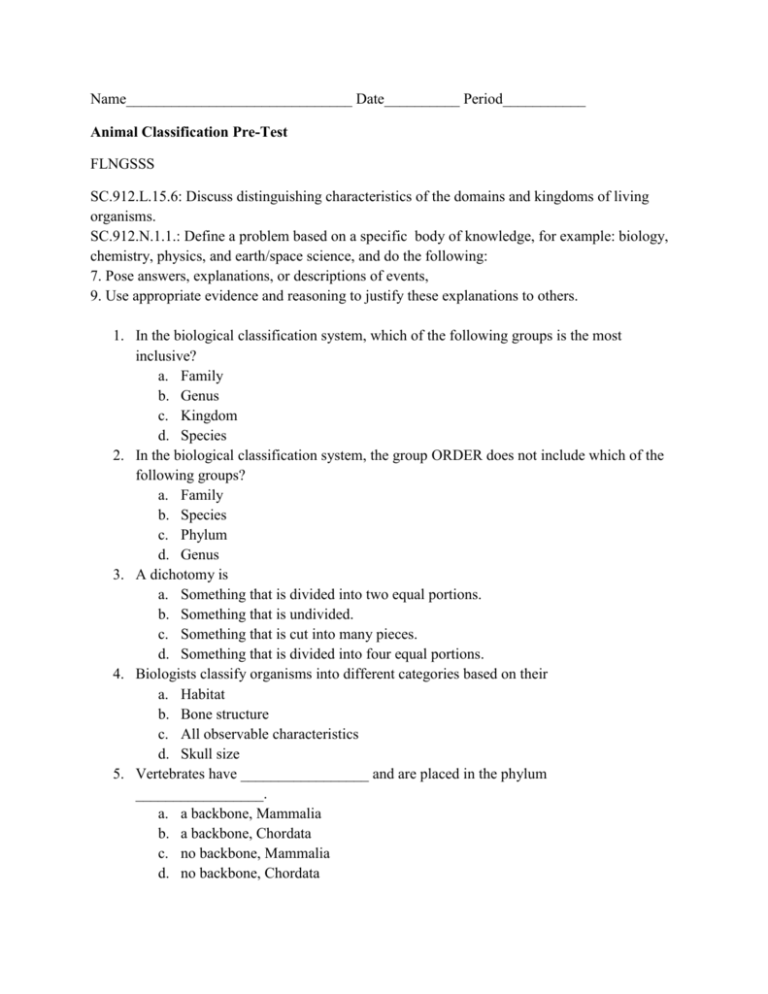
Name______________________________ Date__________ Period___________ Animal Classification Pre-Test FLNGSSS SC.912.L.15.6: Discuss distinguishing characteristics of the domains and kingdoms of living organisms. SC.912.N.1.1.: Define a problem based on a specific body of knowledge, for example: biology, chemistry, physics, and earth/space science, and do the following: 7. Pose answers, explanations, or descriptions of events, 9. Use appropriate evidence and reasoning to justify these explanations to others. 1. In the biological classification system, which of the following groups is the most inclusive? a. Family b. Genus c. Kingdom d. Species 2. In the biological classification system, the group ORDER does not include which of the following groups? a. Family b. Species c. Phylum d. Genus 3. A dichotomy is a. Something that is divided into two equal portions. b. Something that is undivided. c. Something that is cut into many pieces. d. Something that is divided into four equal portions. 4. Biologists classify organisms into different categories based on their a. Habitat b. Bone structure c. All observable characteristics d. Skull size 5. Vertebrates have _________________ and are placed in the phylum _________________. a. a backbone, Mammalia b. a backbone, Chordata c. no backbone, Mammalia d. no backbone, Chordata 6. If an animal eats plants and animals, it is known as a/an a. Herbivore b. Carnivore c. Multivore d. Omnivore 7. Which of the following is a characteristic of animals? a. They have one or more cells. b. They have cell walls. c. They have free-living haploid and diploid stages. d. They reproduce sexually or asexually. 8. Who created the biological classification system? a. Darwin b. Pasteur c. Linnaeus d. Mendel 9. All animals get their energy from other organisms, not from the sun directly. Animals are classified as a. Phototrophs b. Autotrophs c. Omnivores d. Heterotrophs 10. Which of the following is a distinguishing characteristic of all mammals? a. Terrestrial b. Eggs c. Cells d. Mammary glands e. Carnivorous 11. All insects are a. Vertebrates b. Carnivores c. Invertebrates d. Autotrophs
